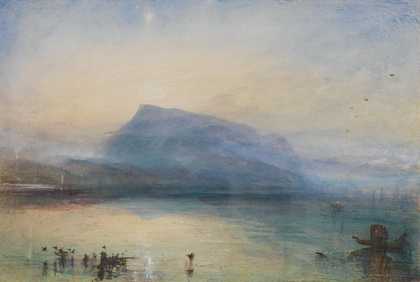Editors’ note
When Joan Miró was asked what he thought was the most important thing he had done to respond to the regime of General Franco’s dictatorship he said: ‘Free and violent things… The works themselves, through their violence and their sense of liberty. That touched people.’ He was referring to an extraordinary series of paintings done late in his life called the Burnt Canvases, which he cut, ripped, stamped on and set on fire, several of which were on show at Tate Modern’s Miró exhibition.
We can now see that Joan Miró’s mark-making had a political edge to it, yet often artists function more benignly. Leonadro da Vinci urged his students to stare at the abstract stains on walls in search of images of ‘landscapes, battles, clouds, uncommon attitudes, humorous faces, draperies’. And as Christopher Turner explores, many have developed this rich vein in the form of accidental blots, spills and marks, as can be seen in the work of Alexander Cozens (who featured in Tate Britain’s Watercolour exhibition) as well as Victor Hugo and Vik Muniz. Happy accidents these may be, but such practice goes to the heart of debates about perception and interpretation.
Other artists have preferred to push the boundaries of what the material presence of art is and, in certain cases, aim for invisibility, as Anna Dezeuze finds out. From Duchamp’s phial of Paris air, via Yves Klein’s notorious exhibition The Void to Martin Creed’s more recent Work No.227: The lights going on and off, artists have often enjoyed making something from nothing. No doubt Leonardo would have approved.
Bice Curiger and Simon Grant


